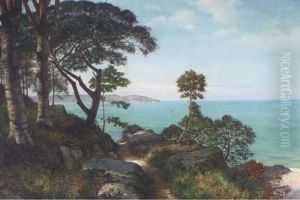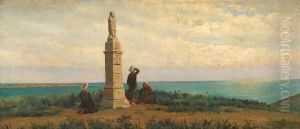Charles Pierre Cordier Paintings
Charles Henri Joseph Cordier, known as Charles Cordier, was a French sculptor who gained recognition for his ethnographic busts and his use of polychrome (multi-colored) materials. Born on October 19, 1827, in Cambrai, France, Cordier was a pioneering artist who sought to represent the diversity of human beauty at a time when European art typically focused on idealized, classical forms and predominantly white subjects.
Educated at the Ecole des Beaux-Arts in Paris, Cordier studied under the prominent sculptor François Rude. His career took a distinctive turn after he visited the 1851 Great Exhibition in London, where he was inspired by the displays of people and artifacts from France's colonies. This experience led to his lifelong passion for ethnographic sculpture, which aimed to portray individuals from various ethnic and cultural backgrounds with dignity and realism.
Cordier's breakthrough came with his 1851 work 'African Venus', which was a bust of a young African woman that combined bronze and onyx to capture the nuances of her complexion. This piece was followed by 'Chinese Man' in 1854 and 'Capresse des Colonies' in 1861, among others, all of which were celebrated for their technical skill and the respectful portrayal of their subjects.
He served as the official sculptor to the Museum of Natural History in Paris, where he was tasked with creating a gallery of anthropological busts. This project was part of a larger French effort to understand and categorize the world's peoples, reflecting the 19th-century fascination with racial typologies that was common in European scientific circles at the time.
Despite the problematic context of colonialism and racial science in which Cordier worked, his sculptures stand out for their unique artistic qualities. He utilized a variety of materials, including marble, bronze, silver, and precious stones, to achieve a realistic representation of skin tones and textures. Cordier's work was not only a product of his time but also a challenge to the prevailing norms of Western art, highlighting the beauty and humanity of non-European subjects.
Cordier's legacy is mixed; he is recognized for his technical innovations and for his role in expanding the scope of French sculpture to include non-Western subjects. However, his work is also viewed through the lens of the colonial attitudes of his era. He died on April 30, 1905, in Algiers, Algeria. Today, his sculptures can be found in various museums, including the Musée d'Orsay in Paris, and they continue to be the subject of scholarly interest and debate regarding their cultural and historical significance.

